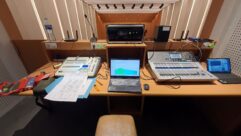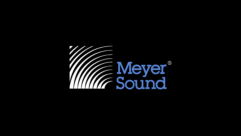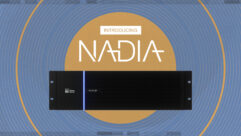
Meyer Sound Excels at UMass Boston Auditorium
Sep 19, 2007 12:00 PM
More AV in Education news from
The Briefing Room

As the largest auditorium on the University of Massachusetts Boston (UMB) campus, the 510-seat Herbert Lipke Auditorium is used continually for everything from lectures, presentations, and panel discussions to guest speakers, a bimonthly student film series, and occasional live broadcast concerts for WUMB-FM, the school’s award-winning, NPR-affiliated, folk music radio station. In order to provide superior audio quality to such a broad spectrum of events, the university’s technical management team upgraded the Lipke Auditorium sound system to one based on Meyer Sound’s self-powered UPJ-1P compact VariO loudspeaker.
“We had a mandate from the chancellor’s office to bring the technology in Lipke Auditorium to a higher level,” says Jeffrey Wade, technical coordinator of the Distance Learning Video Production department at UMB, who supervised the upgrade. “With the Meyer Sound system, we’ve done just that. The quality is superb for all kinds of voice presentations and for acoustic music performances, as well.”
Each side of the stage has two UPJ-1P cabinets, oriented horizontally and mounted one over the other in a small vertical array configuration about 20ft. off the floor. The top cabinet on each side is aimed straight back at the rear section of the raked seating, while the bottom cabinets are angled 55 degrees down to cover the front half of the auditorium. The rotatable VariO horns are oriented to achieve 80 degrees of horizontal coverage by 50 degrees of vertical. An LD-2 line driver supplies drive signals for the loudspeakers.

Chris Pahud, the AV technician and supervisor in the university’s IT Media Services Department primarily responsible for the auditorium, was immediately struck by what he heard from the new Meyer Sound system. “The clarity is awesome, and the coverage is full and uniform,” he says. “Also, we have a tremendous amount of headroom. It’s a huge leap forward from what we had before.”
Wade consulted with Meyer Sound’s Design Services department on the loudspeaker system design; MAPP Online Pro acoustical prediction software was used to calculate optimum positioning and orientation of the loudspeakers. The system was installed by HB Communications of Waltham, Mass., under Wade’s supervision. Wiring infrastructure and the front-end equipment specifications were designed by HB Communications senior engineer Simon Davis in consultation with Wade.
Wade says he had a Meyer Sound solution in mind since day one of the renovation project, but he initially had concerns about costs. “Meyer Sound is known as the finest of sound systems, and I’d bought into the assumption that the cost was much higher,” he says. “But when I sat down and started crunching Meyer’s numbers, and those quoted by other manufacturers, the cost of the UPJ-1P system was about the same, and in some cases less.”

The system’s musical capabilities were put to the test a few weeks after completion when WUMB scheduled a Friday night concert by up-and-coming trio Red Molly, which was to be recorded for later broadcast.
“Based on what they had heard in the room before, the station’s engineers were skeptical that the sound would be any good,” Wade says. “But they were amazed at the power and clarity they heard with the Meyer Sound system. It was a good test, because Red Molly performed in the old school radio way, working around a single condenser microphone and moving in closer for solos. The UPJ speakers revealed every nuance of their performance.”
On most days, however, the system is assigned the more prosaic task of disseminating lectures throughout the room with a clarity that reaches even back-row dwellers. “It’s a very natural reinforcement,” says Wade. “It’s not an artificial, PA-type of sound. It lends the intimacy of a much smaller space.” Pahud adds, “Now the students can understand the professor, even when he’s mumbling. The system is that good.”










